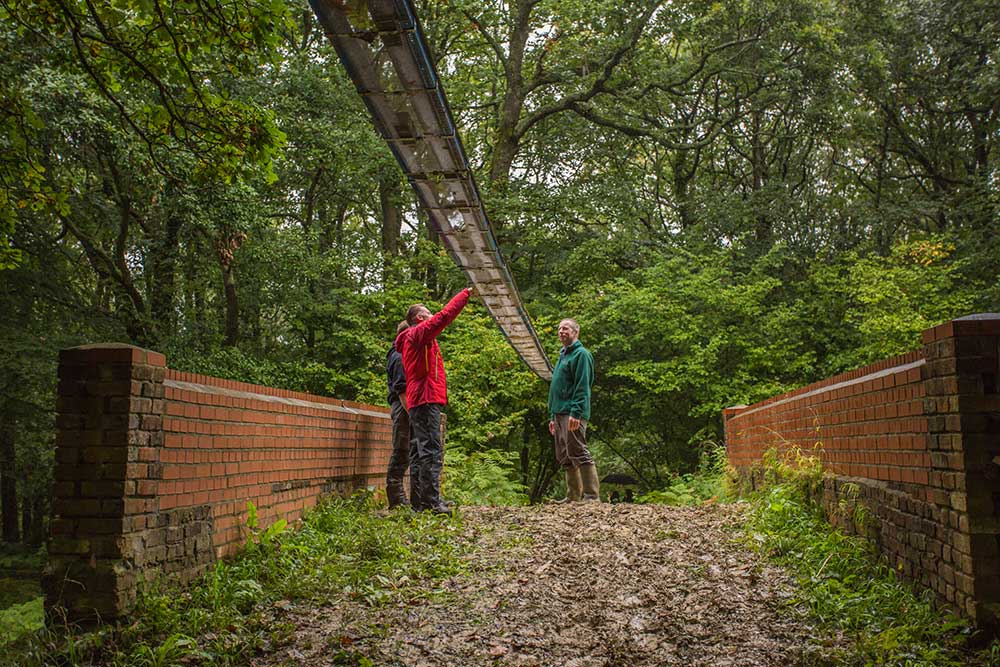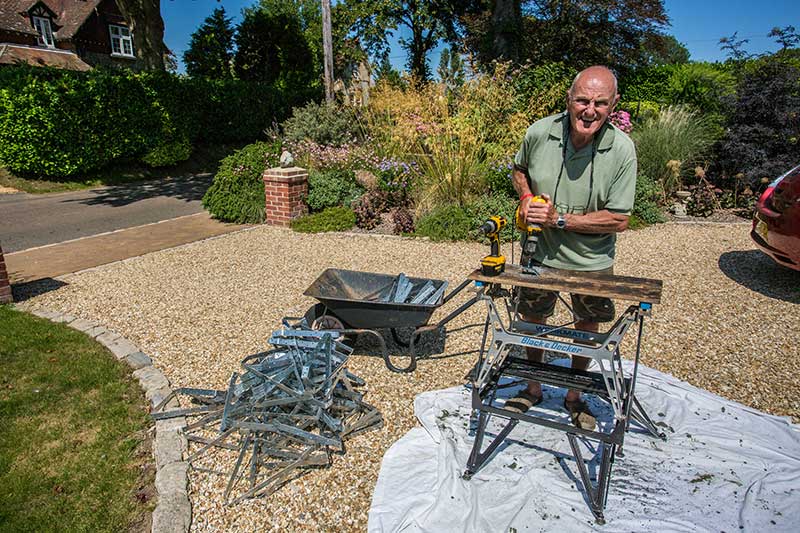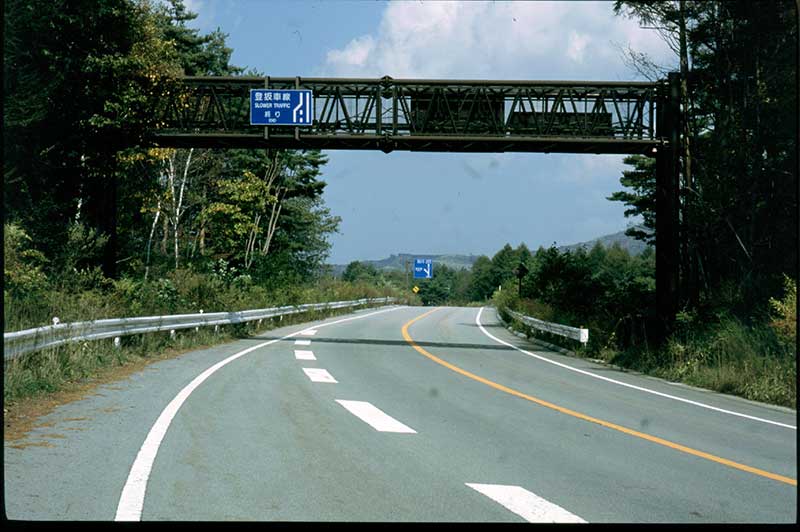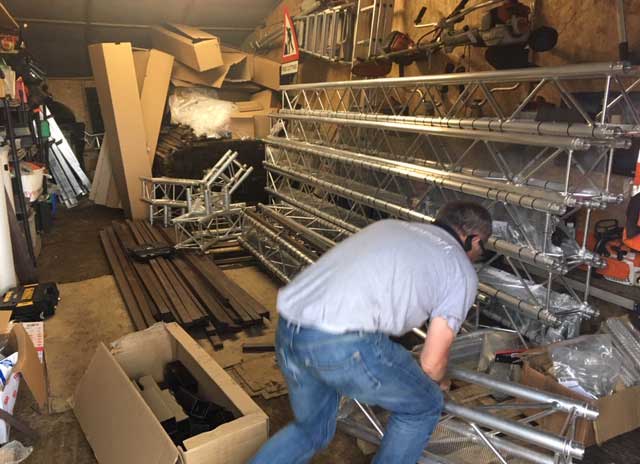Dormouse bridges

When road networks or other infrastructure developments fragment dormouse habitat, aerial structures can maintain connectivity.
We designed and built a small dormouse bridge, based on a Japanese design and tested it in our woodland on the Isle of Wight where there are dormice. Dormice and red squirrels used it within nine hours.
In partnership with Animex, a commercial dormouse bridge is now available.

Building the Briddlesford bridge 
Japanese dormouse bridge
The search for a suitable structure has a long history. Short aerial ropeways were originally recommended but they were quite exposed and there’s no evidence they were used. We investigated using mesh tubes, which were more successful than ropes in captivity but again, there’s no evidence they work in the wild.
At least seven types of mammal, including breeding dormice were recorded on the green bridge installed across the A21 at Scotney Castle in Kent. However, this is a major and costly piece of infrastructure which has substantial shrub planting either side of it.
In Devon, at least two dormice crossed an 8m dual carriageway, questionning the need for aerial bridges at all. However, we know from other studies that dormice do their best to remain in tree and shrub canopy when they can so, although they are both able and willing to travel on the ground, they naturally avoid it.
Aerial bridges have been trialled successfully in Japan for the Japanese dormouse. We based our design on the Japanese experience with great success. The results of our work were published in Conservation Evidence in 2018.
We have been working to save hazel dormice in the UK for over 20 years. Find out about our campaigns and how you can help.
Go back to Hazel dormouse conservation


